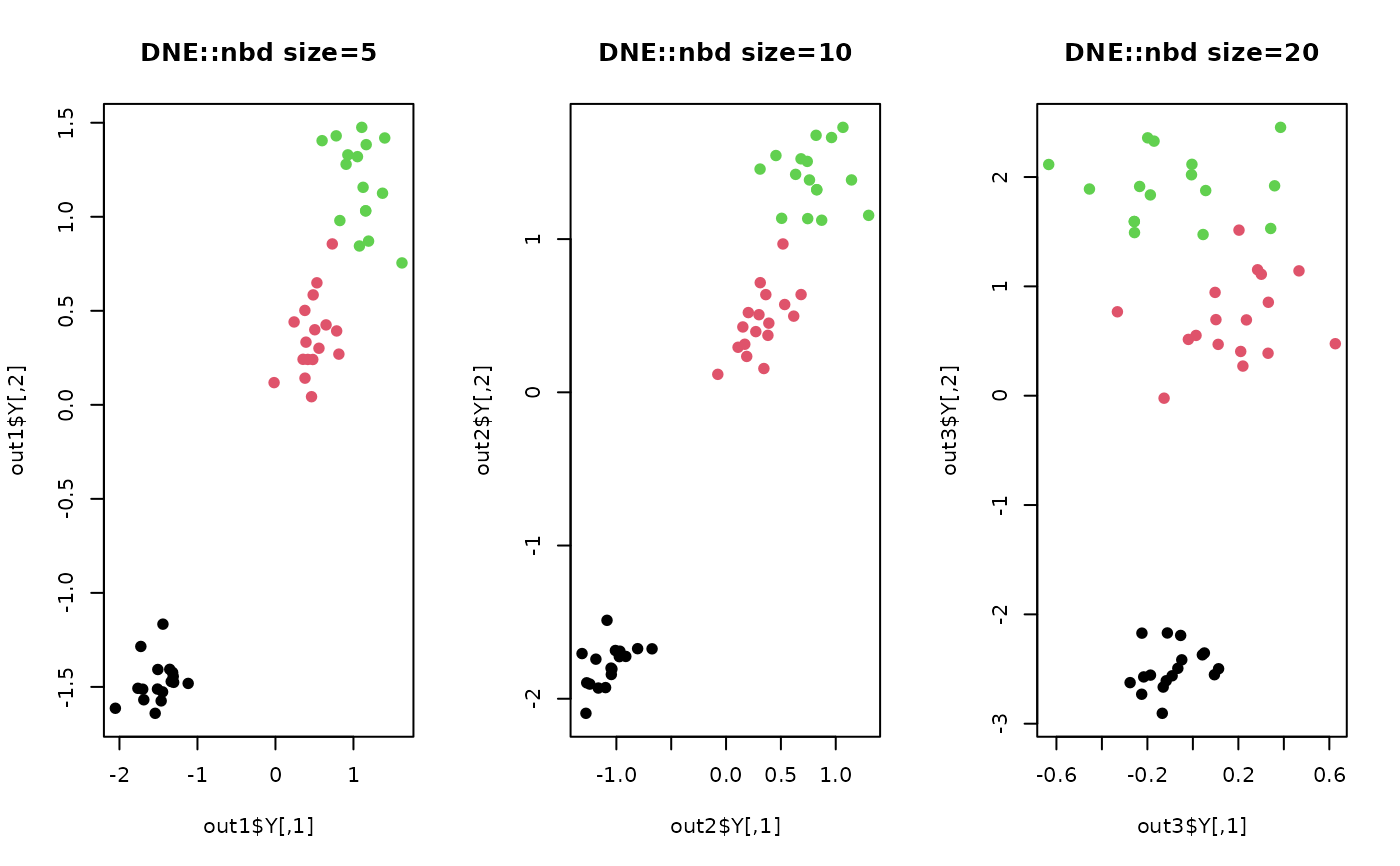Discriminant Neighborhood Embedding (DNE) is a supervised subspace learning method. DNE tries to move multi-class data points in high-dimensional space in accordance with local intra-class attraction and inter-class repulsion.
Arguments
- X
an \((n\times p)\) matrix or data frame whose rows are observations.
- label
a length-\(n\) vector of data class labels.
- ndim
an integer-valued target dimension.
- numk
the number of neighboring points for k-nn graph construction.
- preprocess
an additional option for preprocessing the data. Default is "center". See also
aux.preprocessfor more details.
Value
a named list containing
- Y
an \((n\times ndim)\) matrix whose rows are embedded observations.
- trfinfo
a list containing information for out-of-sample prediction.
- projection
a \((p\times ndim)\) whose columns are basis for projection.
References
Zhang W, Xue X, Lu H, Guo Y (2006). “Discriminant Neighborhood Embedding for Classification.” Pattern Recognition, 39(11), 2240--2243.
Examples
## load iris data
data(iris)
set.seed(100)
subid = sample(1:150,50)
X = as.matrix(iris[subid,1:4])
label = as.factor(iris[subid,5])
## try different numbers for neighborhood size
out1 = do.dne(X, label, numk=5)
out2 = do.dne(X, label, numk=10)
out3 = do.dne(X, label, numk=20)
## visualize
opar <- par(no.readonly=TRUE)
par(mfrow=c(1,3))
plot(out1$Y, main="DNE::nbd size=5", col=label, pch=19)
plot(out2$Y, main="DNE::nbd size=10", col=label, pch=19)
plot(out3$Y, main="DNE::nbd size=20", col=label, pch=19)
 par(opar)
par(opar)